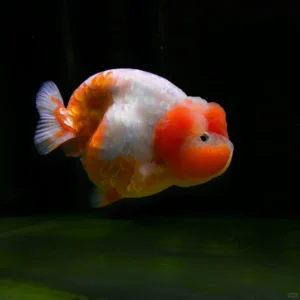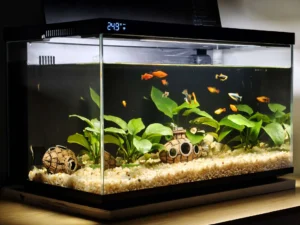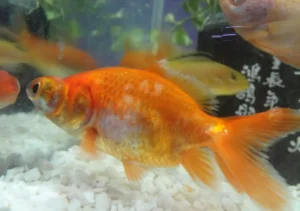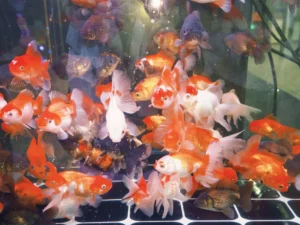Goldfish don’t die from being “overfed”—they die from being suffocated.
Feeding goldfish may seem simple, but there’s actually a lot to learn. Many people believe that overfeeding causes goldfish to “burst” because they supposedly don’t know when to stop eating. When goldfish die in tanks with too much food, people often assume they ate themselves to death. Meanwhile, fish in ponds seem perfectly fine, eating in moderation. Does this mean goldfish are somehow dumber than other fish?

Many people who’ve raised (and accidentally killed) goldfish warn beginners: “Don’t feed too much—goldfish will eat until they die.” But is that really true?
In fact, while goldfish aren’t particularly smart, they’re definitely not stupid enough to eat themselves to death.
1. Goldfish and Crucian Carp — So Similar Yet So Different
Goldfish originated in China and are closely related to crucian carp—they even share the same species classification, often called “gold crucian carp.” Goldfish are descendants of red or yellow wild crucian carp and resemble carp in many ways. Records of goldfish, known as “red-scaled fish,” date back to the Jin Dynasty, making them a true national treasure of China.
Goldfish are gentle, easy to care for, and typically live around six years. With their graceful shapes and brilliant colors, they’ve long been beloved by fish enthusiasts around the world.
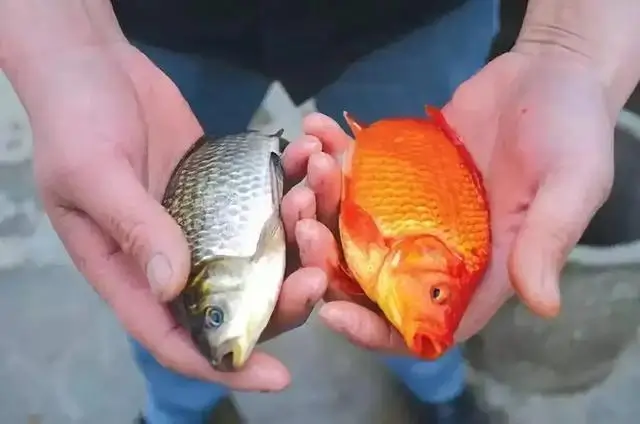
2. The Real Culprit: Decomposing Food and Oxygen Depletion
Goldfish food includes live foods such as worms and daphnia, as well as processed fish pellets. However, when you feed too much at once, leftover food begins to rot in the water—and that’s where the real trouble starts.
After eating, goldfish require more oxygen to digest their food. At the same time, uneaten food decomposes in the tank, releasing harmful substances that pollute the water. The bacteria breaking down the food also consume large amounts of oxygen. If you feed live foods, those too will compete for oxygen.
As a result, overfeeding leads to poor water quality and lower dissolved oxygen levels. When oxygen levels drop too low, goldfish can’t breathe properly and their organs start to fail. In other words, most goldfish don’t die from overeating—they die from oxygen deprivation.

3. The Goldfish You Bought Was Already Weak — Here’s Why
Many people notice that their goldfish seem perfectly healthy when purchased from a pet store, only to die a few days later at home. They didn’t overfeed, and they didn’t change the water too often—so what happened?
The truth is, commercial goldfish often go through long transport times, frequent handling, and crowded conditions. This makes them prone to injuries and infections. To prevent disease outbreaks, many sellers add antibiotics to their tanks, which temporarily boost the fish’s resistance.
That’s why knowing how to choose a healthy goldfish is so important.
A healthy goldfish should have:
- Bright red gills
- A vibrant, semi-transparent tail
- Normal-colored fins and skin around the anal area
In contrast, sick fish often show dark or blackened gills, dull or bloody tails, and split fins.
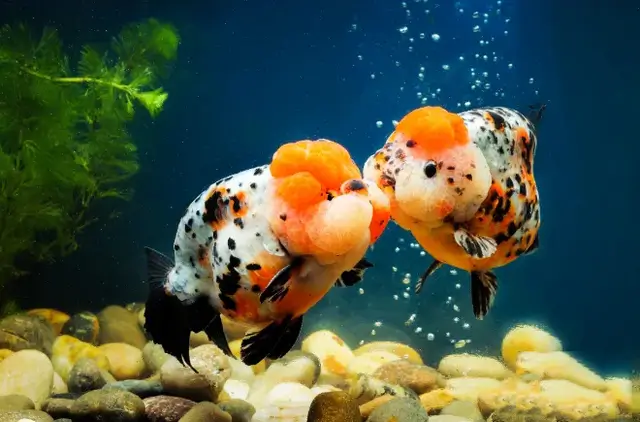
Final Tips for Keeping Goldfish Alive
Now that you understand the real reasons behind goldfish deaths, here are a few key takeaways:
- Feed small amounts, multiple times a day.
- Remove any leftover food promptly.
- Ensure the tank has good aeration and filtration.
With the right feeding habits and proper oxygen supply, your goldfish will stay healthy—and those tragic “mystery deaths” will be a thing of the past.

